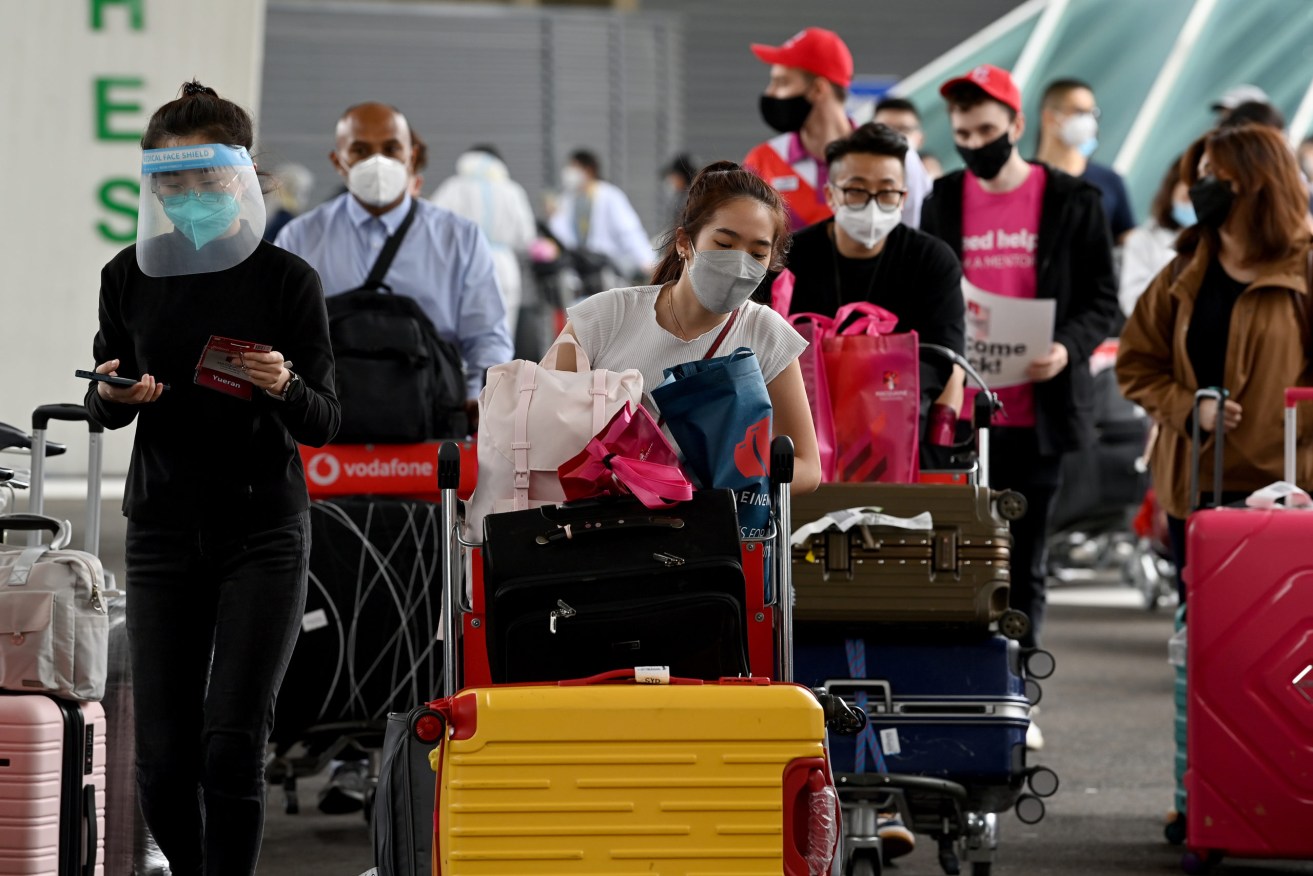We’re starting from behind in the race to win back international students
It will take more than just reopening borders to rebuild our once-booming international education sector writes Robert MacDonald.


International students arrive at Sydney Airport in December 2021 for a pilot program to get international students back to Australian universities.(AAP Image/Bianca De Marchi)
Can Queensland rebuild its once-booming international education industry now that our borders have finally reopened?
Or have we let our competitors get the drop on us?
Various international surveys indicate Australia’s attractiveness as an education destination has fallen sharply during the past two years of closed gates and limited support for stranded overseas students.
“Australia’s reputation as a study destination is at an all-time low,” Perth-based international education group Navitas says in research released in October and based on interviews with more than 1000 education agents in 70 countries.
At the beginning of the pandemic in March 2020, almost 80 per cent of agents “agreed/strongly agreed that Australia’s handling of the coronavirus had made it a more attractive study destination”, Navitas says.
That put us at the top of the list, along with New Zealand.
“Since then, there has been a steady decline and 18 months later, only just over 30 per cent agents agree/strongly agree with that statement.”
Australia’s traditional competitors for international students, Canada and the United Kingdom, have, in the meantime, moved to the top of the rankings with approval ratings of 75 per cent plus.
Interest in the US has also jumped strongly following Joe Biden’s presidential victory.
Recent research from international student recruitment group education.com reveals a similar pattern.
It found that while Asian student interest in Australia had dropped by 35 per cent since 2019, interest in competitor nations had remained strong.
IDP Connect, another big player in the sector, reports the same trend in its research – more international students are choosing Canada, the UK and the US over Australia.
It says Australia’s global share of demand fell from 17 per cent to 12 per cent in the two years to September last year.
Australia’s share of the important Indian market more than halved during the same period, from, 20 per cent to 9 per cent.
Pre-Covid, international education was worth about $5.8 billion to the Queensland economy and about $20 billion nationally.
But in the past two years international student enrolments have fallen sharply, by 30 per cent nationally and 40 per cent in Queensland.
So, what can we do about it?
Both the Queensland and Australian Governments have announced specific plans to win back lost market share.
Queensland has committed $32 million over the past two years “to rebuild Queensland’s international student market following the Covid pandemic”.
Of that amount, $10 million has gone to an international student crisis assistance package”, which last financial year helped nearly 13,000 students and supplied 97,500 meals and food packages.
In addition, Trade and Investment Queensland’s Study Queensland has developed an “international education and training roadmap for 2021-22 which lists the following among its objectives:
“Following the decision of the Queensland Government, facilitate the safe arrival of international students into Queensland with industry, Queensland Government agencies and the Australian Government when it is safe to do so.”
And that’s presumably where we are at the moment – at the beginning of what the roadmap describes as a “safe and gradual return of international students”.
For its part the Federal Government launched a new 10-year Australian Strategy for International Education in November.
It includes around $40 million “in targeted support measures, including regulatory fee relief and an Innovation Development Fund for English language providers”.
Such steps are presumably useful in rebuilding an industry decimated by two years of lockdowns, but regaining Australia’s once pre-eminent position as a trusted provider of international education will take a lot more work.
But Navitas, for one, seems to think it can be done, citing the United States as an example.
“The United States has demonstrated that it is indeed possible for a destination country to achieve a substantial turnaround in its reputation,” Navitas writes in October research.
“Immediately following the start of the Biden administration, the March 2021 Navitas Agent Perception Survey detected a substantial 24 percentage point improvement in views on whether the government’s handling of the pandemic had made it a more attractive destination.”
The upward trajectory has continued in later surveys.
The key for Australia, Navitas says, is to avoid the risk of “a fragmented reopening”.
(Perhaps someone should tell Western Australia, which happens to be the home state of Navitas.)
“Australia will need to deploy a clear and consistent message very soon if it is to recapture some momentum in 2022.
“Students, parents and agents will be especially keen to understand the state of government policy in the months preceding each of the major intake dates in early 2022 and mid 2022, and agents will be looking for clarity so that they can advise students on the best course of action.”
We’ll need to get cracking. Time is running out.












